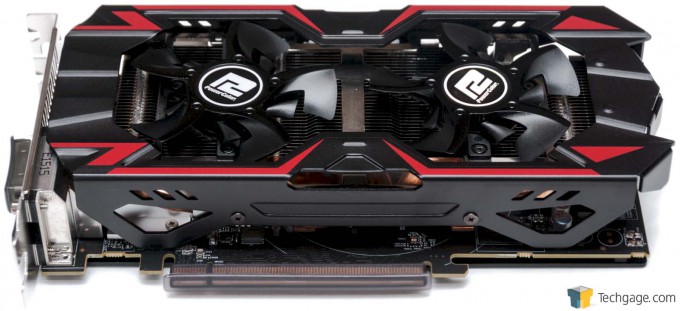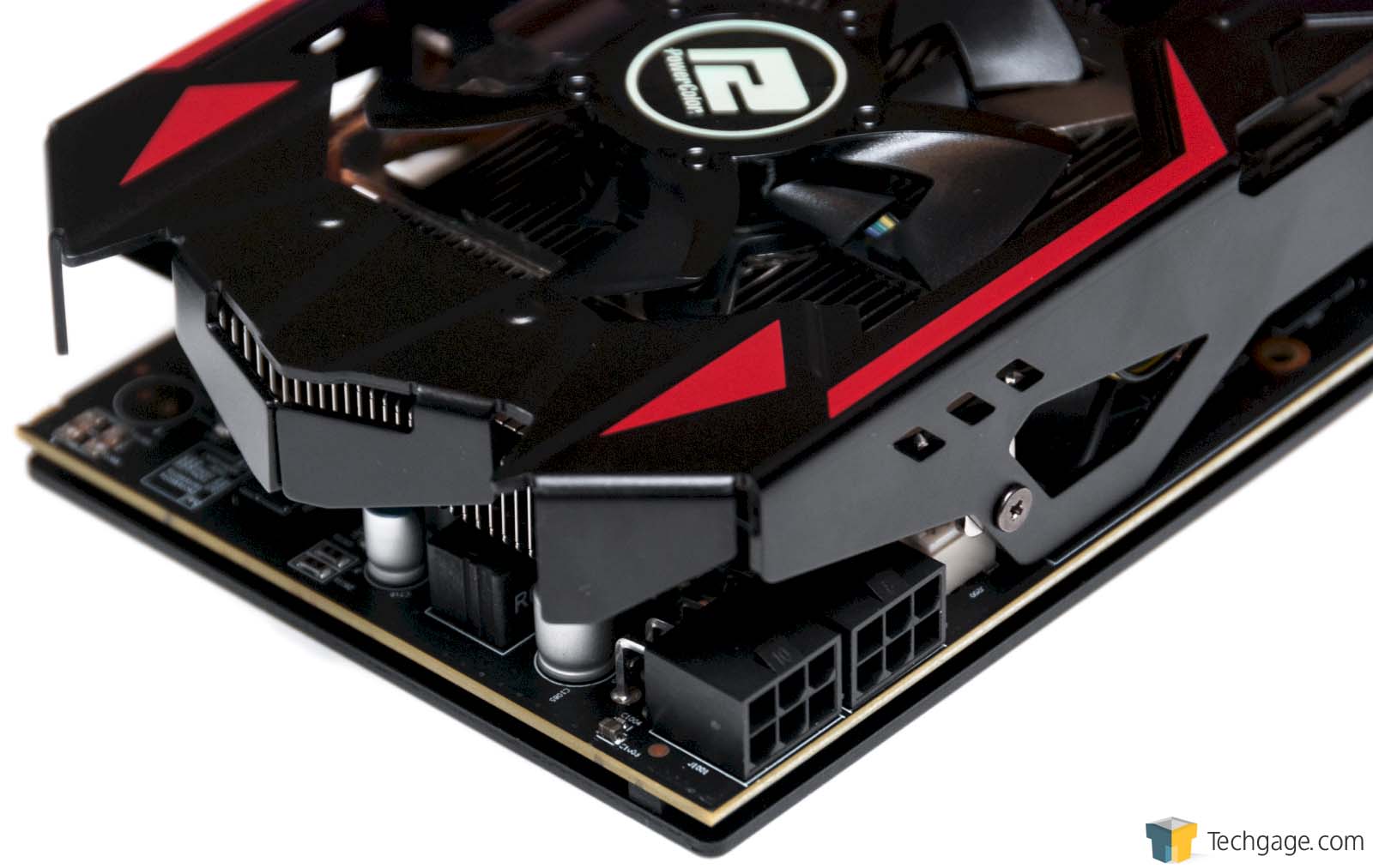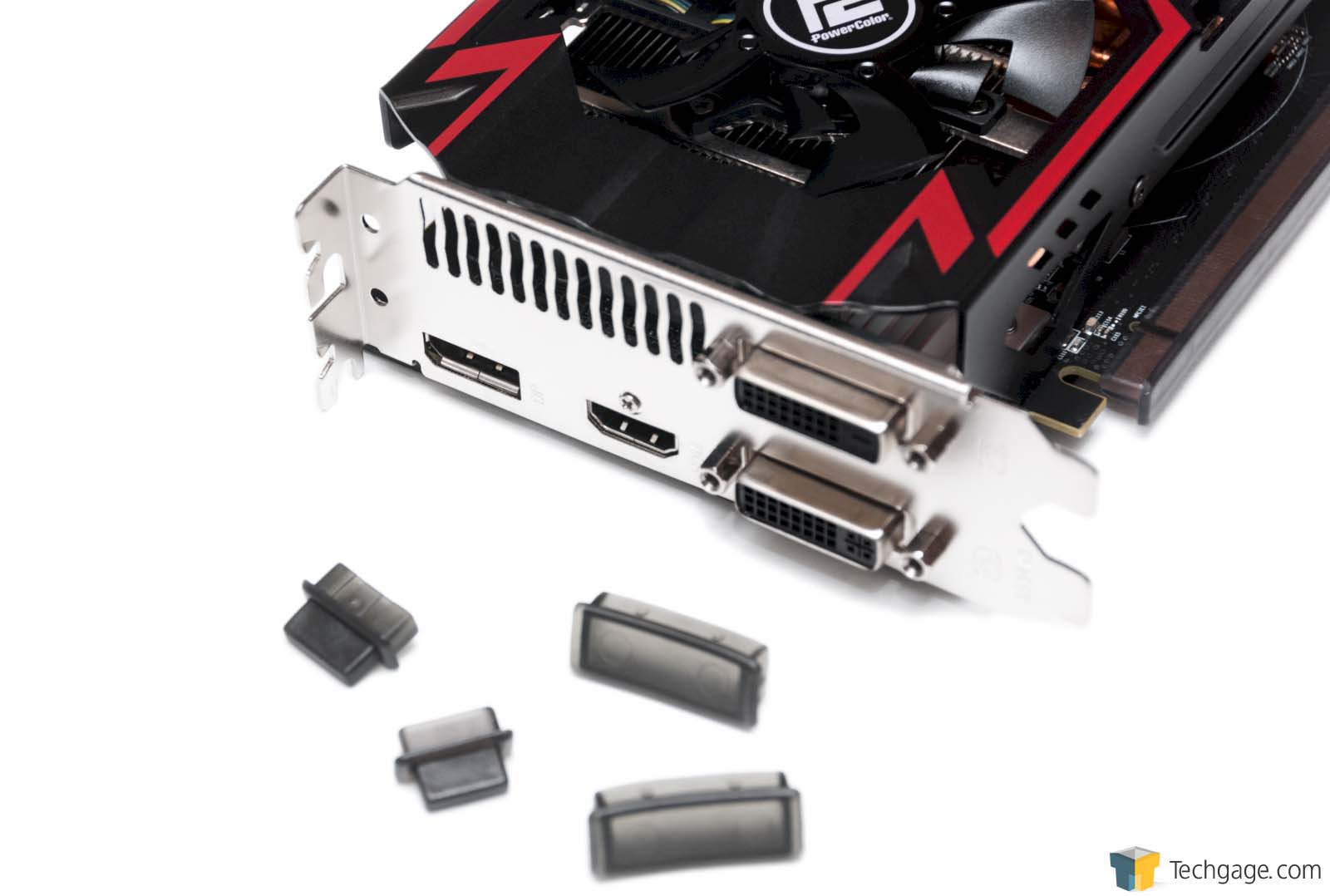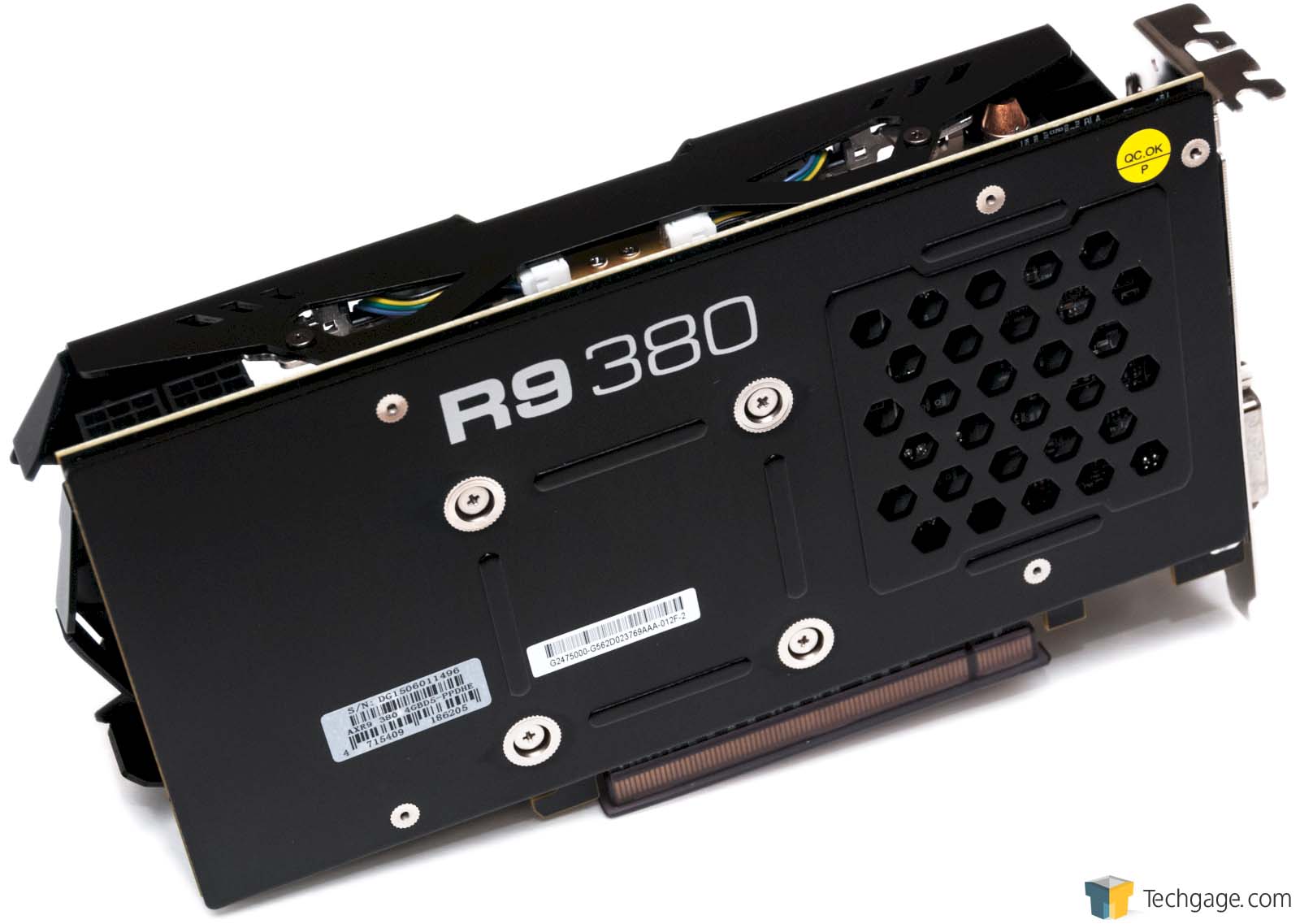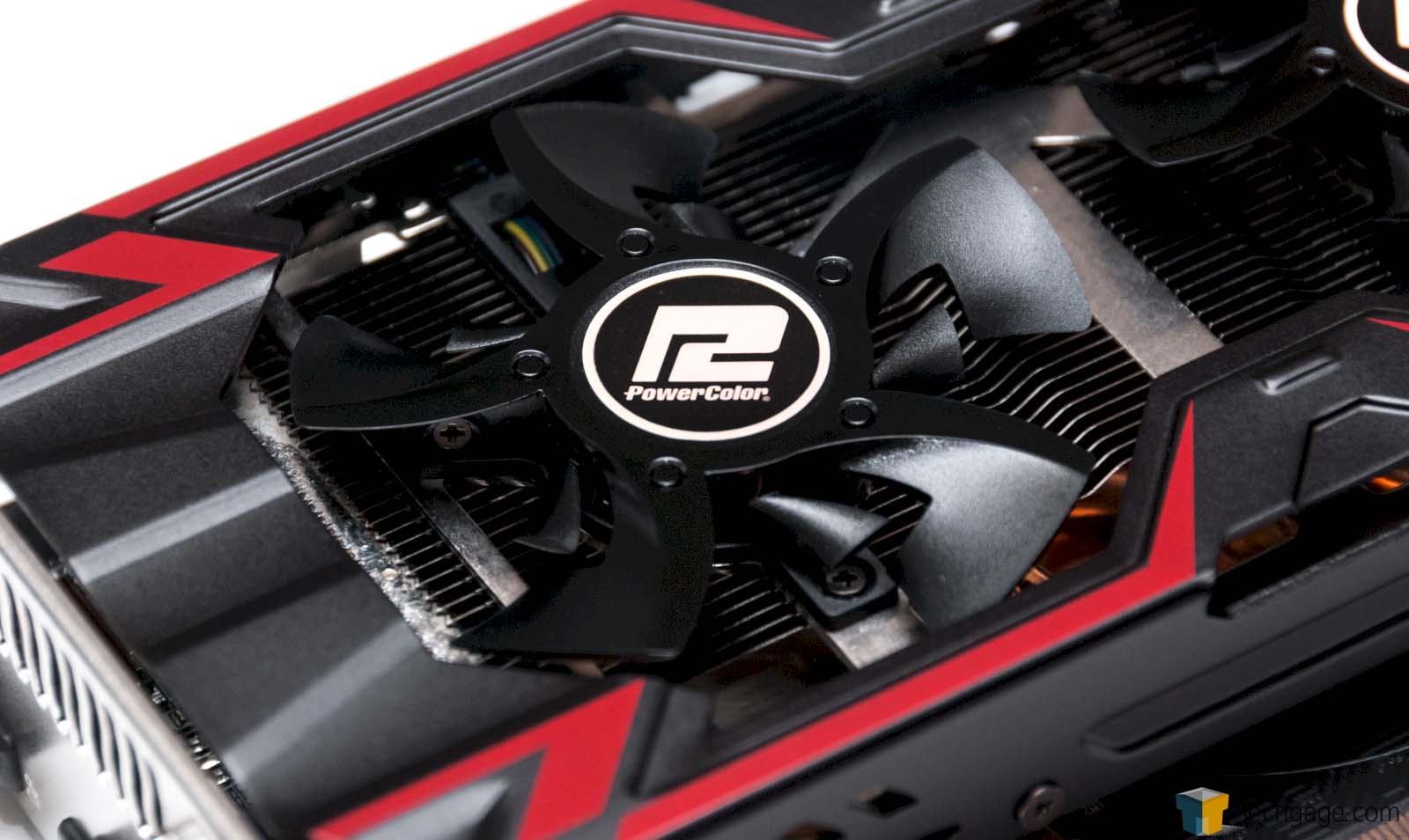- Qualcomm Launches Snapdragon 4 Gen 2 Mobile Platform
- AMD Launches Ryzen PRO 7000 Series Mobile & Desktop Platform
- Intel Launches Sleek Single-Slot Arc Pro A60 Workstation Graphics Card
- NVIDIA Announces Latest Ada Lovelace Additions: GeForce RTX 4060 Ti & RTX 4060
- Maxon Redshift With AMD Radeon GPU Rendering Support Now Available
PowerColor Radeon R9 380 PCS+ Graphics Card Review
When NVIDIA released its ~$200 GeForce GTX 960 this past spring, it delivered a solution that allowed gamers to experience high framerates at 1080p and even enjoy some quality 1440p gaming. AMD’s Radeon R9 380 has similar prospects, and conveniently, costs about the same. With PowerColor’s PCS+ edition on the test bench, let’s see how it compares.
Page 1 – Introduction
As AMD released its 300 series graphics cards back in June, it’s painful to realize that this PowerColor PCS+ card becomes our first respective review. Because I am in a certain type of mood as I write this, let’s tackle some of the ordeals.
When I first received PowerColor’s card, I couldn’t boot into Windows outside of Safe Mode. For a brand-new card, this was obviously bizarre. After receiving a second sample of the same card, I found myself dealing with the exact same issue. After much trial and error, it seemed that somehow, the DisplayPort cable I had been using for years suddenly disagreed with me – even though it was working for every other card I tested.
I thought that was the end of it. That was until I installed the latest driver off of AMD’s website, and it didn’t click. It just installed the Gaming Evolved client and some other piece of software – not the driver itself. Ditto for the second-last driver version. After even more trial and error, I stumbled on AMD’s Catalyst AutoDetect tool, and surprisingly enough, that did work – by downloading a version of the driver that didn’t bundle in .NET (I have been unable to figure out where this version can be downloaded outside of this tool.)
I’d love to get on with the review right now, but if you can believe it, even that wasn’t the end of my troubles. With the new driver installed, I saw that FreeSync wasn’t activated in the Catalyst Control Center, despite the fact that I was using a FreeSync monitor. It didn’t take me long to figure out that something else went wrong. I couldn’t run a game or benchmark without getting a DisplayPort error, even though I was using the cable that came out of that particular monitor’s box. Humorously, after hooking up an alternative monitor – a G-SYNC one – all was well with the world. I could finally benchmark the damn card.
Sorry, PowerColor, it’s not you; it’s AMD.
After all that mess, it’s a good thing that PowerColor’s PCS+ turns out to be a great card. As all of AMD’s 300 series cards are effective iterations on the 200 series ones, there’s nothing too surprising with this card. It even features the same “Double Blades” fans which I’ll show in a bit more detail lower on this page.
But first, let’s see where this card falls into AMD’s current lineup:
| Fury X | Fury | R9 390X | R9 390 | R9 380 | R7 370 | |
| Cores | 4096 | 3584 | 2816 | 2560 | 1792 | 1024 |
| Clock | 1050 MHz | 1000 MHz | 1050 MHz | 1000 MHz | 970 MHz | 975 MHz |
| Memory | 4GB HBM | 4GB HBM | 8GB GDDR5 | 8GB GDDR5 | 4GB GDDR5 | 2GB GDDR5 |
| Memory Clock | 1 Gbps | 1 Gbps | 6 Gbps | 6 Gbps | 5.7 Gbps | 5.6 Gbps |
| Memory Interface | 4096-bit | 4096-bit | 512-bit | 512-bit | 256-bit | 256-bit |
| Memory Bandwidth | 512GB/s | 512GB/s | 384GB/s | 384GB/s | 182.4GB/s | 179.2GB/s |
| ROPs | 64 | 64 | 64 | 64 | 32 | 32 |
| Texture Units | 256 | 224 | 176 | 160 | 112 | 64 |
| Performance | 8.6 TFLOPs | 7.2 TFLOPs | 5.9 TFLOPs | 5.1 TFLOPs | 3.48 TFLOPs | 2.0 TFLOPs |
| TDP | 275W | 275W | 275W | 275W | 190W | 110W |
| Price | $649 | $549 | $429 | $329 | $219 | $149 |
At its price point of ~$200, the R9 380 competes against NVIDIA’s GeForce GTX 960. As of the time of writing, this particular R9 380 card can be had at Newegg for $190 for the 2GB model, and it also happens to be the least-expensive of the bunch, while NVIDIA’s GTX 960 least-expensive offering is around $200 even, although select cards have mail-in rebates. As these things go, pricing and mail-in rebate availability can change without warning, but given these cards are in the same price range, those will be the two singled out in the performance reports.
PowerColor’s PCS+ edition R9 380 features four video connectors: 2x DVI, 1x HDMI, and 1x DisplayPort. While I for some reason didn’t have much success with hooking this card up to our FreeSync monitor, it does in fact support it.
As seen in the table above, the R9 380 is a 190W card, which warrants dual 6-pin PCI-e power connectors be used. In the fourth shot in the slider above, the “Double Blades” fan can be seen. At quick glance, they might not look much different from other fans, but look closer, and you will see that each blade consists of two separate blades. PowerColor says this improves airflow by about 20%. All I know is, it looks bad ass.
Overall, a sharp-looking card with a definite gamer feel. Earlier, I mentioned that the R9 380 goes head-to-head with NVIDIA’s GTX 960, so now it’s time to see which one comes out on top. But first, a quick overview of how I conduct testing.
Support our efforts! With ad revenue at an all-time low for written websites, we're relying more than ever on reader support to help us continue putting so much effort into this type of content. You can support us by becoming a Patron, or by using our Amazon shopping affiliate links listed through our articles. Thanks for your support!




